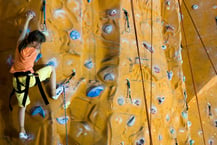Young kids' creativity is a strong tool that helps them say what they want, figure out how to do things, and see the world in new ways. Reading and math are examples of skills that are often taught directly. Creativity, on the other hand, is a natural talent that grows with support and the right setting. Children's brains are open to innovative ideas and events in the early years, so those years are especially important. We can help kids' mental and social growth as well as their ability to think creatively by encouraging their imagination. Parents and teachers can help young children be creative by giving them a safe place to play, letting them use their imaginations, and giving them chances to express themselves. Children can create a lifelong love of learning and creative discovery by putting these strategies into practice.
Importance of Creativity
Not only is creativity an artistic skill, but it is also an important part of growing up and has a significant impact on our mental, emotional, and social development. Young children learn how to think critically and solve problems by being encouraged to be creative. It makes kids stronger because they learn how to deal with problems in different ways and keep going even when things go wrong. Also, kids often have to work together on artistic projects, which helps them improve their ability to talk to others and work as a team. Kids' self-esteem goes up when they are proud of the things they make or come up with. Overall, encouraging kids' imagination helps them become well-rounded and gets them ready for how complicated the world is these days.
Create a Stimulating Environment
Creativity thrives in an atmosphere that challenges and fascinates. Arrange a wide variety of objects in your house to spark curiosity and creativity. Items such as paints, markers, and crayons, as well as blocks and Legos, as well as commonplace things like cardboard boxes, discarded cloth and other objects, might fall into this category. Put everything where the kids can easily find it and let them pick what they like. Moreover, surround the area with vibrant posters, motivational sayings, and samples of artistic endeavors. Children are more likely to experiment and think creatively when they are in a setting that provides them with many visual and sensory cues.
Encourage Imaginative Play

Imaginative play is an important part of growing creatively. Give kids costumes, clothes, props, and toys that they can play with in any way they want. This will help them make up their own stories and situations. Encourage kids to play role-playing games where they can make up new worlds and play as different characters. This kind of play helps kids learn how to tell stories, understand other people, and control their emotions. For instance, playing "house" or "shop" lets kids try out different social roles and get to know other kids. Meanwhile, making castles or dream places helps them learn how to solve problems and use their space. Don't put too many rules or results on kids' play; let them choose how to play.
Provide Opportunities for Artistic Expression

One straight way to boost imagination is to do creative things. Give kids many ways to express themselves, like using art supplies to draw, paint, carve, and make things. Leave kids to explore the materials and make whatever they can think of without giving them specific directions or results. Your appreciation for their imagination and hard work will show by how you display their art. As an extra way to show imagination and energy, do art projects together. "What made you want to make this?" or "How does this piece make you feel?" are some questions that can be used to talk about their work. Their efforts are not only recognized, but this also makes them think more deeply and express themselves more freely.
Encourage Curiosity
Being curious is what makes people creative. Kids should be encouraged to find out more about what interests them and ask questions about the world around them. To satisfy their interests, give them books, films, and hands-on shows. Take part in conversations that make people think and investigate things, and never brush off their questions as unimportant. Instead, lead them to find answers and learn more. For example, if your kid is interested in space, take them to a planetarium, let them watch space programs, or give them books about scientists and the solar system. Kids can develop a lifelong love for learning and finding by being encouraged to be curious.
Limit Screen Time
While technology can be a valuable tool, excessive screen time can stifle creativity. Encourage children to engage in physical activities and outdoor play, which provide endless opportunities for imaginative and creative play. Sports activities like swimming, running, and exploring nature stimulate the senses and inspire curiosity. Outdoor play can also involve creative tasks, such as building sandcastles, creating nature art, or engaging in pretend play in a park. Physical activity helps children to develop their physical abilities, coordination, and visual awareness, all of which are linked to creative thinking.
Set an Example
To learn, kids watch the people around them. Showing them how to be creative can encourage them to be creative themselves. Do things that make you feel artistic, like gardening, cooking, drawing, or playing music. Tell them how you produce ideas and include them in your projects. Talk about the good and bad parts of being artistic. Show that it is okay to fail and try new things. Because kids will be more likely to be creative themselves if they think it is important and fun to be creative. This method not only helps kids be creative, but it also helps you connect with them better by sharing experiences.
Popular Topics

What is Vitamin D deficiency? Spotting early signs of Vitamin D deficiency
Reviewed By Divya Gandhi, Dietitian

How to help your child retain strength throughout the day
Reviewed By Apurva Surve, Sports Nutritionist

Understanding How Vitamin D Leads to Strength
Reviewed By Kejal Shah, Nutrition Expert

How Vitamin D plays a Role in Building Strength for Various Sports
Reviewed By Kejal Shah, Nutrition Expert
The views expressed are that of the expert alone.
The information provided in this content is for informational purposes only and should not be considered a substitute for professional medical advice, diagnosis, or treatment. Always seek the advice of your physician or another qualified healthcare provider before making any significant changes to your diet, exercise, or medication routines.











